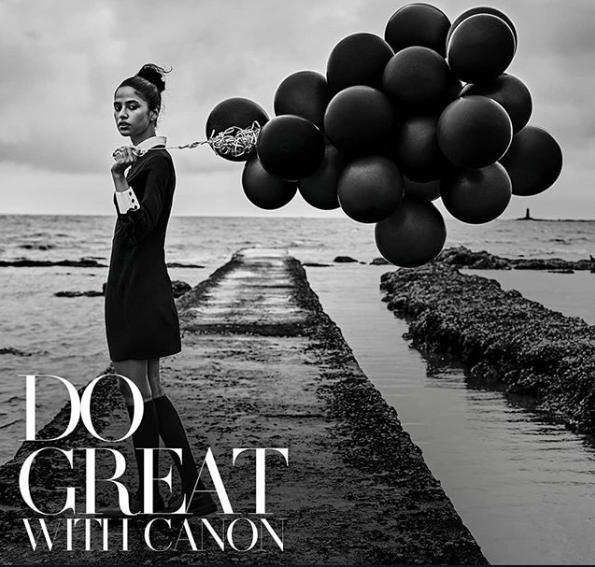Black and white photography is as much an art as it is a science. The beauty of black and white photography is timeless. The very roots of photography go back to the age of the monochrome when colour was not yet available to photographers. In the age of digital photography, black and white photography is more of a highly developed dramatic storytelling technique rather than a compulsion. With the introduction of full-frame mirrorless cameras such as the interchangeable lens EOS RP camera from Canon, black and white (B&W) photography has turned into a rich and complex medium. Let us unravel it with an understanding of the basics.

Image Reference: Canon india Official Instagram account.( https://www.instagram.com/p/B2_FepvgcQx/)
Why B&W Photography?
The one question that beginners often ask is, “Why work with Black and White photography at all?” Colour is a very powerful medium and often dominates the image. The presence of two or more vivid colours can be very distracting and the attention or the focus that the subject deserves can often be lost. Working with colour has its own merits but the one important element that often is lost in colour photography is the quality of light. B&W photos tend to showcase this along with highlighting the shape and form of the subject, the tonal contrast and the texture of the image. Expert photographers love to play with the drama that B&W photography has to offer.
Shooting B&W Vs Conversion
This is a common conundrum faced by photographers. Digital mirrorless cameras allow the photographer to shoot in colour and to convert it to black and white post-production. One can also shoot in black and white directly. The choice is a matter of comfort. If you are not versatile with post-production editing, it is better to shoot in B&W. Shooting in colour and converting later gives you the option of choosing between the two media at a later time.
Understanding Colour and Contrast
Contrast becomes all the more important when it comes to B&W photography. The natural and artificial light, the different shades of grey, and the play of shadows become stark when it comes to B&W pictures. This makes it important to learn to adjust the contrast for a powerful result.
Photographers who are just about starting out do not quite understand the effect of colours in a B&W photo. Colours translate into shades of grey and these serve to populate the picture providing just the contrast and drama that black and white images are known for.
Pick the Right Background
One of the best subjects for B&W photography is a portrait. B&W accentuates the eyes, the expressions, and the shadows on the face. The less the distraction, the better it is. This makes it all the more important to choose a plain background rather than a busy one. If it is a natural scene that you choose, then focus on the play of light and keep a light background. Mirrorless DSLR cameras, like the EOS R and RP cameras from Canon, allow you to make the necessary adjustments to bring out the best in B&W photography.
In the world of photography, experts and master photographers tend to make B&W photography their niche. It takes a lot of patience, practice, and understanding to master this form of photography. With time you shall be able to harness the drama of the monochrome.
